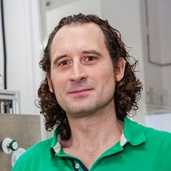Organic Reaction in Green Solvents
A special issue of Molecules (ISSN 1420-3049). This special issue belongs to the section "Green Chemistry".
Deadline for manuscript submissions: closed (30 June 2016) | Viewed by 47925
Special Issue Editors
Interests: homogeneous catalysis; organometallic chemistry; green chemistry; sustainable solvents; deep eutectic solvents; water
Special Issues, Collections and Topics in MDPI journals
Special Issue Information
Dear Colleagues,
Due to both environmental and economic issues, chemistry is driven to reduce waste and re-use materials in order to meet the standards of the 12 Principles of Green Chemistry. These Principles have become a widely accepted set of criteria for the assessment of the Greenness of a given chemical transformation.
In this sense, the choice of a safe, non-toxic, biorenewable, and cheap solvent is a crucial goal in metal-catalyzed organic reactions. Thus, one of the largest areas of consumption of petroleum-based chemicals in a conventional metal-catalyzed organic transformation is the solvent used as a reaction medium (i.e., solvents account for 80-90% of mass utilization in a typical pharmaceutical/fine chemical operational process). On top of this, conventional volatile organic solvents (VOCs), commonly used as reaction media in metal-mediated organic procedures, can cause well-established environmental problems due to their: i) high toxicity; ii) non-biodegradability; iii) accumulation in the atmosphere (low boiling points); and iv) flammability.
To overcome the drawbacks of traditional VOCs, and to still benefit from the solvent effect, remarkable research efforts have been focused on the replacement of traditional organic solvents by Green Solvents.
Dr. Joaquín García Álvarez
Dr. Jonathan Sperry
Guest Editors
Manuscript Submission Information
Manuscripts should be submitted online at www.mdpi.com by registering and logging in to this website. Once you are registered, click here to go to the submission form. Manuscripts can be submitted until the deadline. All submissions that pass pre-check are peer-reviewed. Accepted papers will be published continuously in the journal (as soon as accepted) and will be listed together on the special issue website. Research articles, review articles as well as short communications are invited. For planned papers, a title and short abstract (about 100 words) can be sent to the Editorial Office for announcement on this website.
Submitted manuscripts should not have been published previously, nor be under consideration for publication elsewhere (except conference proceedings papers). All manuscripts are thoroughly refereed through a single-blind peer-review process. A guide for authors and other relevant information for submission of manuscripts is available on the Instructions for Authors page. Molecules is an international peer-reviewed open access semimonthly journal published by MDPI.
Please visit the Instructions for Authors page before submitting a manuscript. The Article Processing Charge (APC) for publication in this open access journal is 2700 CHF (Swiss Francs). Submitted papers should be well formatted and use good English. Authors may use MDPI's English editing service prior to publication or during author revisions.
Keywords
- Green Solvents,
- Water,
- Bio-derived solvents,
- Glycerol,
- scCO2,
- Deep Eutectic Solvents,
- Ionic Liquids,
- perfluorinated solvents







